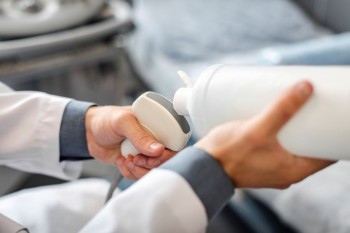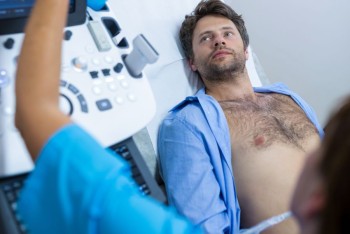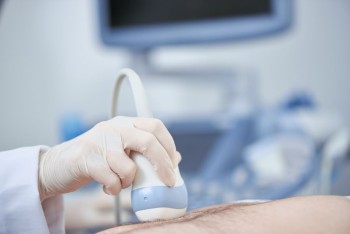
Lower Limbs Venous color Doppler is a crucial diagnostic tool in evaluating the venous system of the lower extremities.
Both Lower Limbs Venous Color Doppler in India with Cost
Both Lower Limbs Venous Color Doppler in Detail
Lower Limbs Venous color Doppler is a crucial
diagnostic tool in evaluating the venous system of the lower extremities.
Employing Doppler ultrasound technology, this non-invasive procedure provides
detailed images, aiding healthcare professionals in diagnosing various venous
disorders. Let's explore the intricacies of Both Lower Limbs Venous color
Doppler and its significance in venous health diagnostics.
Understanding Lower
Limbs Venous color Doppler
Doppler Ultrasound for Venous Assessment
Similar to arterial assessments, Doppler ultrasound for venous evaluation detects changes in sound wave frequency caused by moving blood cells. Lower Limbs Venous color Doppler specifically focuses on the venous system of the lower limbs.
Procedure Walkthrough
Patient preparation is crucial for accurate results. The procedure involves a step-by-step process, capturing detailed images of venous blood flow in the lower limbs. Patients generally find the examination comfortable, and the non-invasive nature of the test is advantageous.
Interpretation of Results
Reading and Analyzing Doppler Ultrasound Images for Venous Conditions
The obtained images are carefully interpreted to identify abnormalities in venous blood flow. Common findings may include the presence of blood clots, venous insufficiency, or varicose veins. The clinical significance of these results is pivotal in diagnosing and managing venous disorders.
Indications and Applications
Lower Limbs Venous color Doppler is indicated in various medical conditions, including deep vein thrombosis (DVT), venous insufficiency, and varicose veins. The test contributes significantly to the diagnosis of these venous disorders, providing valuable insights not easily obtained through alternative diagnostic methods.
Benefits and Limitations
Advantages of Lower Limbs Venous Color Doppler
The procedure's non-invasiveness is a notable advantage, offering real-time imaging for immediate assessment. It is a patient-friendly alternative to invasive venography, providing detailed information without the need for contrast agents.
Limitations and
Challenges
While highly effective, Lower Limbs Venous color Doppler may face challenges in cases where imaging quality is compromised, such as in obese individuals. Understanding these limitations is crucial, prompting consideration of alternative venous imaging techniques when necessary.
Importance in Venous Health
Assessing Overall Venous Health
The test plays a pivotal role in assessing overall venous health, enabling the early detection of venous disorders. This information is crucial in implementing preventive measures and developing personalized treatment plans.
Case Studies
Real-life examples highlight the effectiveness of Lower Limbs Venous color Doppler in diagnosing and managing various venous conditions. These case studies showcase successful outcomes and demonstrate the test's applicability across different patient demographics.
Future Trends and Innovations
Ongoing Research and Advancements
Ongoing research in Doppler ultrasound technology for venous assessments aims to enhance diagnostic capabilities. Future advancements may focus on improving imaging resolution and expanding the range of venous disorders that can be effectively diagnosed.
Patient Education
Educating patients about the importance of venous health and the role of routine screenings using Lower Limbs Venous color Doppler is crucial. Dispelling common misconceptions can encourage more individuals to undergo regular assessments, facilitating early detection and preventive measures.
Expert Opinions
Healthcare Professionals' Insights
Healthcare professionals emphasize the significance of integrating Lower Limbs Venous color Doppler into routine healthcare. Their insights provide valuable
perspectives on its role in preventive venous health and its potential to address issues before they progress.
Conclusion
In conclusion, Both Lower Limbs Venous color Doppler emerges as a vital tool in venous health diagnostics. Its non-invasive nature, coupled with accurate and real-time imaging, positions it as a valuable asset in diagnosing and managing various venous disorders. As technology continues to advance, the future holds exciting possibilities for further improving the efficacy of this diagnostic method.
Frequently Asked Questions (FAQs)
1. Is Lower Limbs Venous color Doppler suitable for diagnosing varicose
veins?
Yes, Lower Limbs Venous color Doppler is effective in diagnosing varicose veins. It provides detailed images that help healthcare professionals assess the extent and severity of the condition.
2. Can the procedure identify blood clots in the veins like deep vein thrombosis (DVT)?
Absolutely. Lower Limbs Venous color Doppler is a reliable method for identifying blood clots, including DVT, in the veins of the lower limbs.
3. Are there any specific risks associated with Lower Limbs Venous color Doppler?
The procedure is generally considered safe with minimal risks. It does not involve radiation or contrast agents, reducing potential complications.
4. How often should individuals undergo Lower Limbs Venous color Doppler screening?
The frequency of screening depends on individual health conditions and risk factors. Consult with healthcare professionals for personalized recommendations.
5. Can Lower Limbs Venous color Doppler be used during pregnancy?
While generally safe during pregnancy, healthcare providers may consider alternative methods or postpone the test unless medically necessary. Consultation with a healthcare professional is advised in such cases.
6. Is Lower Limbs Venous color Doppler suitable for
assessing chronic venous insufficiency?
Yes, Lower Limbs Venous color Doppler is effective in assessing chronic venous insufficiency, providing detailed information about venous blood flow and potential abnormalities.
7. Can this test detect blood clots in smaller veins?
Lower Limbs Venous color Doppler is capable of detecting blood clots in both larger and smaller veins, contributing to a comprehensive assessment of the venous system.
8. Is there any discomfort associated with the Lower Limbs Venous color Doppler procedure?
The procedure is generally painless. Patients might feel slight pressure as the ultrasound transducer moves over the skin, but overall, it is well-tolerated.
9. Can Lower Limbs Venous color Doppler diagnose conditions beyond blood clots and venous insufficiency?
Yes, the test can diagnose various conditions, including venous malformations and abnormalities, contributing to a comprehensive evaluation of venous health.
10. Are there age restrictions for undergoing Lower Limbs Venous color
Doppler?
No, there are no specific age restrictions. Lower Limbs Venous color Doppler can be performed on individuals of all age groups, from children to the elderly.
11. How soon can patients resume normal activities after the procedure?
Patients can generally resume normal activities immediately after the procedure. There is no downtime associated with Lower Limbs Venous color Doppler.
12. Can the test be used for monitoring ongoing treatments for venous conditions?
Yes, besides its diagnostic role, Lower Limbs Venous color Doppler is valuable for monitoring the effectiveness of treatments and making necessary adjustments as needed.
13. Is Lower Limbs Venous color Doppler covered by insurance?
In many cases, the procedure is covered by insurance, especially when prescribed by a healthcare professional. However, it is advisable to check with the insurance provider to confirm coverage.
14. Can the procedure be repeated, and if so, how often?
The necessity for repeat testing depends on individual health conditions and treatment plans. Healthcare professionals will determine the appropriate frequency for follow-up examinations.
15. Does the procedure pose any risk of radiation exposure?
No, Lower Limbs Venous color Doppler does not involve radiation exposure, making it a safe imaging modality for assessing venous health.
(0)
Login to continue



